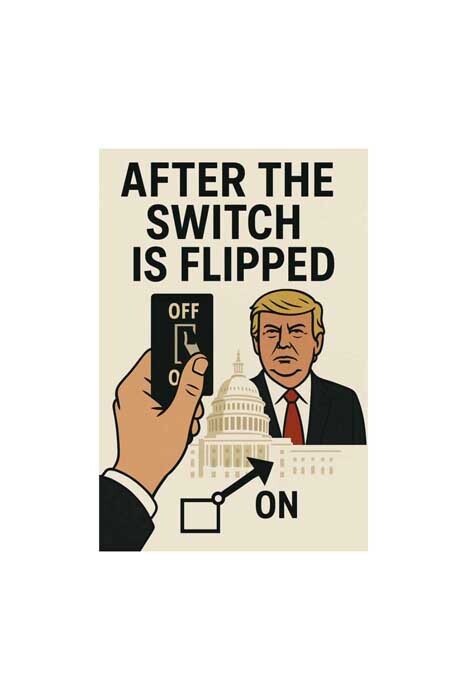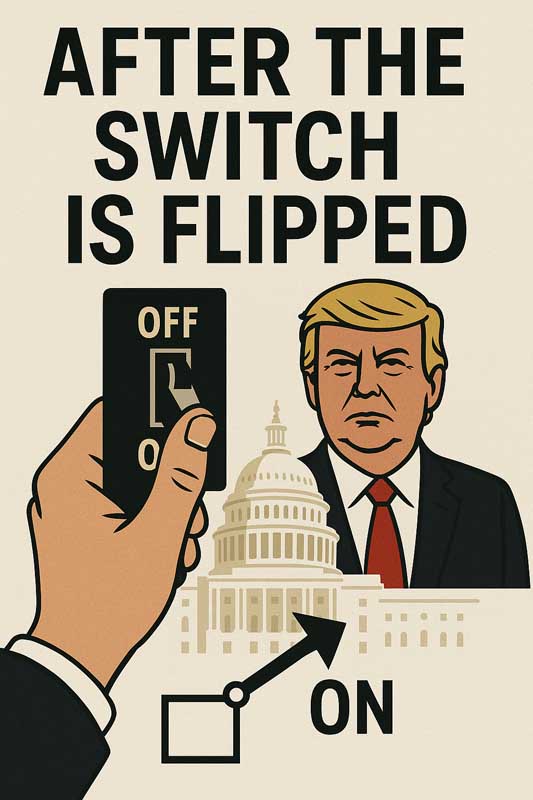News Staff![]() Oct 22
Oct 22
796 views 0 Comments 0 Likes

After the Switch Is Flipped
Project 2025 is less a single policy than a way of governing: centralize authority in the White House, install ideologically aligned personnel, and drive rapid change through executive orders, budget levers, and agency guidance rather than waiting on Congress. The blueprint comes from a Heritage Foundation–led coalition, whose 900-plus-page “Mandate for Leadership,” talent pipeline, and training academy were assembled by veterans of the first Trump administration (notably project director Paul Dans and associate director Spencer Chretien). Heritage’s president Kevin Roberts wrote the foreword; former OMB director Russ Vought authored the playbook for a more muscular budget office.
Since January, the administration has moved on the “personnel-is-policy” premise—reinstating Schedule F to make policy-shaping civil servants easier to replace and tightening control over agencies. Supporters say this restores accountability; critics warn it politicizes career posts. Either way, it’s the master key that unlocks the rest of the agenda.

What likely comes next
1) Budget power as the throttle. Expect the White House and OMB to push aggressive rescissions and apportionments that slow-walk funds they oppose and fast-track those they favor. Vought’s chapter envisions OMB as the president’s “air-traffic control,” inserting itself into virtually every policy lane. A shutdown or CR fight only sharpens that leverage.
2) Rulemaking by blitz. Look for a rapid swing through the regulatory agenda: rewriting or rescinding rules on energy, environment, labor, and education by leaning on the unitary-executive theory and on friendly readings of recent Supreme Court signals that curb agency discretion. Schedule F–style staffing makes that sprint faster.
3) Civil-rights and DEI retrenchments. The administration has already ordered pullbacks in federal DEI infrastructure; the next phase is likely to hard-wire those changes into guidance, grant conditions, and enforcement priorities across Justice, Education, HHS, and the EEOC—less splashy than an executive order, but durable in practice.
4) Border and immigration through executive action. Expect continued use of emergency declarations, enforcement guidance, and interagency tasking to centralize border policy in the West Wing and DHS leadership, mirroring the blueprint’s emphasis on presidential control.
5) Communications, tech, and the culture stack. Project 2025 contains chapters aimed at public broadcasting, the FCC/FTC, and education content. Anticipate nominations and internal memos that reset priorities on platform oversight, children’s online safety frames, and grant-making to culturally conservative ends.
Who’s behind it—and which politicians are in the mix
The institutional hub is the Heritage Foundation’s Project 2025, edited by Paul Dans and Steven Groves, with contributions from a network of conservative groups and alumni of the first Trump term (contributors include figures tied to immigration, HHS civil-rights, and the regulatory shop at OIRA). Public overviews identify Dans and Chretien as the day-to-day leads; Heritage’s Roberts has been the most visible champion.)
On the political side, the personnel list tells the story. Russ Vought—an author of the blueprint’s “strong OMB” theory—again runs the budget office; congressional allies such as Sen. Mike Lee and Speaker Mike Johnson have publicly applauded the broader strategy, while the president himself has more recently nodded to the plan’s architects after campaigning at arm’s length from the “Project 2025” label.
How it could affect you
Your services. If you rely on federally supported programs (student aid rules, workplace protections, healthcare enforcement, environmental safeguards), expect shifts in standards and enforcement speed as agencies reprioritize. The Brookings Institution’s review of Schedule F warns that heavy politicization risks lower administrative capacity and slower service, even when policy goals are clear.)
Your workplace. Federal employees face tighter return-to-office mandates and reduced job protections under the revived Schedule F framework, with unions and courts contesting both. That turbulence can ripple into how quickly permits are processed, benefits are paid, and grants are administered.
Your bills and business. Businesses in energy, finance, and education may see lighter-touch rules and faster approvals; firms built around compliance with Obama-/Biden-era rules could face whiplash costs as the baseline moves. Households may notice changes indirectly—through state fights over environmental and social standards, insurance pricing tied to regulatory uncertainty, and differing protections across states.
Is this a slide to dictatorship?
The United States remains a constitutional republic with multiple checks: courts, Congress’s power of the purse, state attorneys general, inspectors general, and—ultimately—elections. Project 2025 does not abolish those checks. What it does seek is executive aggrandizement: maximizing presidential control over the bureaucracy and minimizing the autonomy of career officials. That isn’t “dictatorship,” but scholars of democracy label it a form of democratic backsliding if it erodes neutral administration and concentrates discretion in political hands. The scale of Schedule F and OMB-centric governance is precisely why watchdogs warn about reduced accountability and capacity, even as supporters hail “accountability to the voters.”
The bottom line
If the first months were about flipping the master breakers—Schedule F, hiring controls, West Wing budget muscle—the next phase is about wiring the house: embedding personnel, budget, and guidance choices deep in the agencies so they are hard to reverse quickly. Whether you cheer that as long-overdue accountability or fear it as politicization, the practical consequence is the same: more decisions channeled through the presidency, more policy defined by who holds key desks, and more of your daily life shaped by memos you’ll never see, but will absolutely feel.

At Desert Local News, connections are everything. We're not just another social networking platform—we're a lively hub where people from all walks of life come together to share stories, spark ideas, and grow together. Here, creativity flourishes, communities grow stronger, and conversations spark global awareness.
Comments